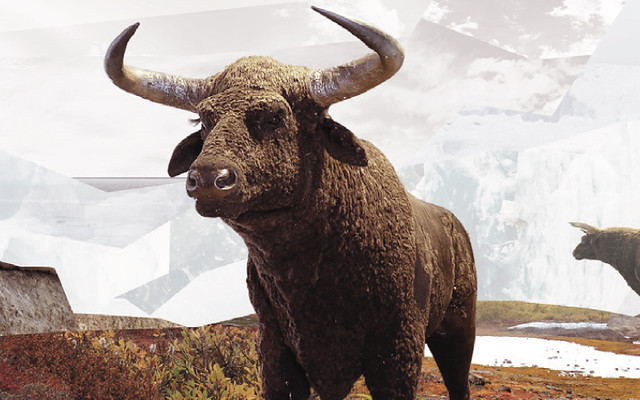The aurochs (/ˈɔːrɒks/ or /ˈaʊrɒks/; pl. aurochs, or rarely aurochsen, aurochses), also known as urus or ure (Bos primigenius), is an extinct species of large wild cattlethat inhabited Europe, Asia, and North Africa. It is the ancestor of domestic cattle and the European bison, crossbred with steppe bison.[2] The species survived in Europe until the last recorded aurochs died in the Jaktorów Forest, Poland, in 1627.
During the Neolithic Revolution, which occurred during the early Holocene, at least two aurochs domestication events occurred: one related to the Indian subspecies, leading to zebu cattle, and the other one related to the Eurasian subspecies, leading to taurine cattle. Other species of wild bovines were also domesticated, namely the wild water buffalo, gaur, wild yak and banteng. In modern cattle, numerous breeds share characteristics of the aurochs, such as a dark colour in the bulls with a light eel stripe along the back (the cows being lighter), or a typical aurochs-like horn shape.[3]
The appearance of the aurochs has been reconstructed from skeletal material, historical descriptions, and contemporaneous depictions, such as cave paintings, engravings, or Sigismund von Herberstein’s illustration. The work by Charles Hamilton Smith is a copy of a painting owned by a merchant in Augsburg, which may date to the 16th century. Scholars have proposed that Smith’s illustration was based on a cattle/aurochs hybrid, or an aurochs-like breed.[21] The aurochs was depicted in prehistoric cave paintings and described in Julius Caesar‘s The Gallic War, Book 6, Ch. 28.[22]
(From Wikipedia, May 2018)




